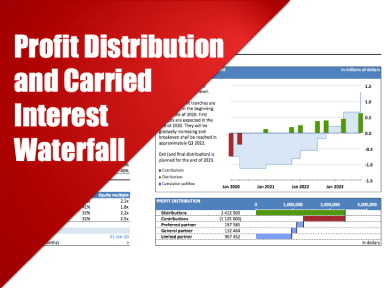
Last version published: 30/06/2021 09:43
Publication number: ELQ-46089-4
View all versions & Certificate

Profit Distribution and Carried Interest Waterfall
A template illustrating various setups of profit distribution between the JV partners with a carried interest waterfall
Further information
Calculate carried interest based on distribution waterfall
Joint ventures or partnerships with carried interest arrangements
n/a







